Ty Cobb
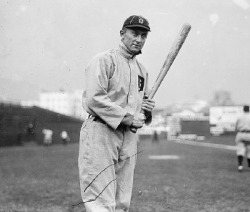
Ty Cobb was born on December 18, 1886 in Narrows, Georgia. Sometimes referred to as “The Georgia Peach” Cobb is considered, by historians and journalists, one of the greatest “dead ball era” baseball players of all time. He received the highest number of votes in the 1936 Baseball Hall of Fame, 222 out of a possible 226 votes. He is credited for creating 90 major baseball records in his sports career.
Ty’s career had a unusual start- his first game that he ever played happened several days after his mother murdered his father. In Ty’s first game, he played center field for the Detroit Tigers on August 30, 1905, but it wasn’t until later in his career that he became famous.
Ty’s leap to fame happened in 1911. “Baseball is like a war” he told journalists before a game “Every time at bat is a crusade”. Ty was gaining stardom, as more and more people began to notice the emerging rookie.
Ty finally died on July 17, 1971. He was glad to have spent his last days with a famous comedian, Joe Brown. In his last days, he told Brown that he had made mistakes in life, some that he was unable to account for, but he also claimed that he had no regrets in life.
“I often tried plays that looked recklessly daring, maybe even silly. But I never tried anything foolish when a game was at stake, only when we were far ahead or far behind. I did it to study how the other team reacted, filing away in my mind any observations for future use.” ~ Ty Cobb
Ty’s career had a unusual start- his first game that he ever played happened several days after his mother murdered his father. In Ty’s first game, he played center field for the Detroit Tigers on August 30, 1905, but it wasn’t until later in his career that he became famous.
Ty’s leap to fame happened in 1911. “Baseball is like a war” he told journalists before a game “Every time at bat is a crusade”. Ty was gaining stardom, as more and more people began to notice the emerging rookie.
Ty finally died on July 17, 1971. He was glad to have spent his last days with a famous comedian, Joe Brown. In his last days, he told Brown that he had made mistakes in life, some that he was unable to account for, but he also claimed that he had no regrets in life.
“I often tried plays that looked recklessly daring, maybe even silly. But I never tried anything foolish when a game was at stake, only when we were far ahead or far behind. I did it to study how the other team reacted, filing away in my mind any observations for future use.” ~ Ty Cobb
Jim Thorpe
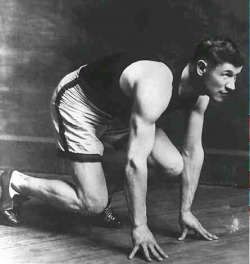
Jim Thorpe was another sports hero, as equally famous as Ty Cobb, except in a different field, the Olympics.
In the 1912 Olympics, two new events were in place, a pentathlon and a decathlon. A pentathlon that was based off of the Greek traditions had been organized before in the 1906 Summer Olympics, but the 1912 pentathlon would have the long jump, javelin throw, 200-meter run, a discus throw and finally the 1500-meter dash.
The decathlon was brand new, although it had been used before in smaller meets. The events of the new decathlon were slightly different from the U.S. Version, but both events seemed fit for Thorpe, who was so grand that he had formed a team in several track meets. He could run the 100-yard dash in 10 seconds flat, the 220 in 21.8 seconds, the 440 in 51.8 seconds, the 880 in 1:57, the mile in 4:35, the 120-yard high hurdles in 15 seconds, and the 220-yard low hurdles in 24 seconds.He could long jump 23 ft 6 in and high-jump 6 ft 5 in. He could also pole vault 11 feet, put the shot 47 ft 9 in, throw the javelin 163 feet, and throw the discus 136 feet. He was practically unbeatable.
Jim entered the U.S. Olympics for both the pentathlon and the decathlon. He won the awards without much effort, and, winning three events, and was named to the greatest pentathlon team, which also included future International Olympic Committee president Avery Brundage.
Thorpe would contest his first—and, sadly only,—decathlon in the Olympics. Thorpe's record of 8,413 points would stand for a whopping two decades.
" I competed in track and field, because it was something I could do by myself, one-on-one, me against everybody else." ~ Jim Thorpe
In the 1912 Olympics, two new events were in place, a pentathlon and a decathlon. A pentathlon that was based off of the Greek traditions had been organized before in the 1906 Summer Olympics, but the 1912 pentathlon would have the long jump, javelin throw, 200-meter run, a discus throw and finally the 1500-meter dash.
The decathlon was brand new, although it had been used before in smaller meets. The events of the new decathlon were slightly different from the U.S. Version, but both events seemed fit for Thorpe, who was so grand that he had formed a team in several track meets. He could run the 100-yard dash in 10 seconds flat, the 220 in 21.8 seconds, the 440 in 51.8 seconds, the 880 in 1:57, the mile in 4:35, the 120-yard high hurdles in 15 seconds, and the 220-yard low hurdles in 24 seconds.He could long jump 23 ft 6 in and high-jump 6 ft 5 in. He could also pole vault 11 feet, put the shot 47 ft 9 in, throw the javelin 163 feet, and throw the discus 136 feet. He was practically unbeatable.
Jim entered the U.S. Olympics for both the pentathlon and the decathlon. He won the awards without much effort, and, winning three events, and was named to the greatest pentathlon team, which also included future International Olympic Committee president Avery Brundage.
Thorpe would contest his first—and, sadly only,—decathlon in the Olympics. Thorpe's record of 8,413 points would stand for a whopping two decades.
" I competed in track and field, because it was something I could do by myself, one-on-one, me against everybody else." ~ Jim Thorpe
Woodrow Wilson
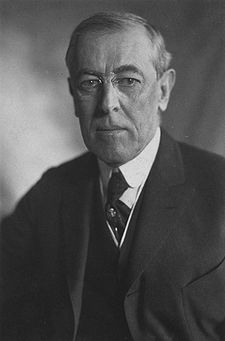
28th President of the United States.
Democratic
Narrowly re-elected in 1916, Wilson had a second term centered on World War I. He promised to maintain U.S. neutrality, but when the German Empire began unrestricted submarine warfare, he wrote several admonishing notes to Germany, and in April 1917 asked Congress to declare war on the Central Powers.
In the late stages of the war, Wilson took personal control of negotiations with Germany, including the armistice. He issued his Fourteen Points, his view of a post-war world that could avoid another terrible conflict. He went to Paris in 1919 to create the League of Nations and shape the Treaty of Versailles, with special attention on creating new nations out of defunct empires. Largely for his efforts to form the League, he was awarded the Nobel Peace Prize in 1919. Wilson collapsed with a debilitating stroke in 1919, as the home front saw massive strikes and race riots, and wartime prosperity turn into postwar depression.
Democratic
Narrowly re-elected in 1916, Wilson had a second term centered on World War I. He promised to maintain U.S. neutrality, but when the German Empire began unrestricted submarine warfare, he wrote several admonishing notes to Germany, and in April 1917 asked Congress to declare war on the Central Powers.
In the late stages of the war, Wilson took personal control of negotiations with Germany, including the armistice. He issued his Fourteen Points, his view of a post-war world that could avoid another terrible conflict. He went to Paris in 1919 to create the League of Nations and shape the Treaty of Versailles, with special attention on creating new nations out of defunct empires. Largely for his efforts to form the League, he was awarded the Nobel Peace Prize in 1919. Wilson collapsed with a debilitating stroke in 1919, as the home front saw massive strikes and race riots, and wartime prosperity turn into postwar depression.
Thomas R.Marshall
Thomas Riley Marshall (March 14, 1854 – June 1, 1925) was an American politician who served as the 28th Vice President of the United States of the United States of America under Woodrow Wilson from 1913 to 1921. Site /http://en.wikipedia.org/wiki/Thomas_R._Marshall/.
Marshall's name was put in as Indiana's choice for President. but ultimately agreed to endorse Woodrow Wilson and successfully Marshall got named the vice presidential candidate.
Thomas Riley Marshall (March 14, 1854 – June 1, 1925) was an American politician who served as the 28th Vice President of the United States of America under Woodrow Wilson from 1913 to 1921.
Marshall's name was put in as Indiana's choice for President. but ultimately agreed to endorse Woodrow Wilson and successfully Marshall got named the vice presidential candidate.
Thomas Riley Marshall (March 14, 1854 – June 1, 1925) was an American politician who served as the 28th Vice President of the United States of America under Woodrow Wilson from 1913 to 1921.
Emilline Bells
Emmeline B. Wells Despite her role as a former plural wife, Emmeline Wells made a name as an early activist for women's suffrage and advocate for educational and economic opportunities, leading the effort to include women's right to vote in Utah's state constitution. She became president of the Mormon Women's Relief Society in 1910, and two years later, at the age of 84, became the first Utah woman to earn an honorary degree, which was awarded by Brigham Young University. She worked diligently as a liaison between Mormons and non-Mormons, and for nearly 30 years represented Utah in the National Women's Suffrage Association. She died in 1921.
Site /http://webschool.wash.k12.ut.us/socialstudies/utah/1910notables.html/.
Early life of Emmeline B. Wells
Her father died when Emmeline was four years old. She taught school briefly before her first marriage at the age of fifteen.
Site /http://webschool.wash.k12.ut.us/socialstudies/utah/1910notables.html/.
Early life of Emmeline B. Wells
Her father died when Emmeline was four years old. She taught school briefly before her first marriage at the age of fifteen.
William Glackens
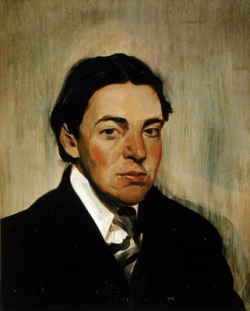
William Glackens was born on March 13, 1870. He was soon a U.S. realist painter. He did his amazing works through the 1910's.
William Glackens studied at the Pennsylvania Academy of the Fine Arts. He later moved to New York City, where he co-founded what was soon to be called the Ashcan School art movement. This group of artists, were given the names "the Eight Independent Painters" or The Eight by the press. They chose to exhibit their works without pre-approval by the juries of the current art foundation. He became known for his dark paintings of street scenes and daily life in the cities that he visited. His later work was brighter than before, and showed the influence of Renoir. During much of his career as an artist, Glackens also worked as an illustrator for newspapers and magazines in Philadelphia and New York City. Glackens work was very popular, and was well known by most. His true talents were painting, etching, drawing, and painting murals, which made being an artist a good choice.
After a life filled with popularity, Glackens finally died on May 22, 1938 at the age of 68.
William Glackens studied at the Pennsylvania Academy of the Fine Arts. He later moved to New York City, where he co-founded what was soon to be called the Ashcan School art movement. This group of artists, were given the names "the Eight Independent Painters" or The Eight by the press. They chose to exhibit their works without pre-approval by the juries of the current art foundation. He became known for his dark paintings of street scenes and daily life in the cities that he visited. His later work was brighter than before, and showed the influence of Renoir. During much of his career as an artist, Glackens also worked as an illustrator for newspapers and magazines in Philadelphia and New York City. Glackens work was very popular, and was well known by most. His true talents were painting, etching, drawing, and painting murals, which made being an artist a good choice.
After a life filled with popularity, Glackens finally died on May 22, 1938 at the age of 68.
Betty Smith
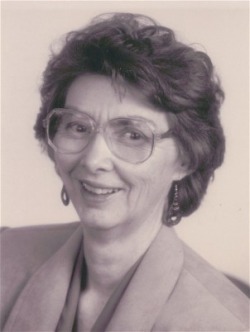
Betty Smith was born on December 15, 1896. She was soon to become an author.
Betty was born in Brooklyn, New York and she met many German immigrants. She grew up being very poor in Williamsburg, Brooklyn. These times served as the beginning to her first novel, A Tree Grows in Brooklyn (1943).
After marrying George H. E. Smith, also a Brooklynite, she moved with him to Ann Arbor, Michigan, where he started a law degree at the University of Michigan. She then gave birth to two girls and waited until they were in school to complete her school. Although Smith had not even finished high school, the university let her be in some classes. There she showed her skills in journalism, literature, writing, and drama, winning an amazing Hopwood Award. She was a student in Professor Kenneth Thorpe Rowe’s classes.
In 1938 she divorced her husband and moved to Chapel Hill, North Carolina. Shortly after, she married Joseph Jones, the same year that “A Tree Grows in Brooklyn” was published. She teamed up with George Abbott to write the book for the 1951 musical “A tree grows in Brooklyn”. Throughout her life, Smith worked as a dramatist, getting many awards and fellowships including the Rockefeller Fellowship and the Dramatists Guild Fellowship for her work in drama. Her other novels include “Tomorrow Will Be Better” (1947), “Maggie-Now” (1958), and “Joy in the Morning” (1963).
Betty was born in Brooklyn, New York and she met many German immigrants. She grew up being very poor in Williamsburg, Brooklyn. These times served as the beginning to her first novel, A Tree Grows in Brooklyn (1943).
After marrying George H. E. Smith, also a Brooklynite, she moved with him to Ann Arbor, Michigan, where he started a law degree at the University of Michigan. She then gave birth to two girls and waited until they were in school to complete her school. Although Smith had not even finished high school, the university let her be in some classes. There she showed her skills in journalism, literature, writing, and drama, winning an amazing Hopwood Award. She was a student in Professor Kenneth Thorpe Rowe’s classes.
In 1938 she divorced her husband and moved to Chapel Hill, North Carolina. Shortly after, she married Joseph Jones, the same year that “A Tree Grows in Brooklyn” was published. She teamed up with George Abbott to write the book for the 1951 musical “A tree grows in Brooklyn”. Throughout her life, Smith worked as a dramatist, getting many awards and fellowships including the Rockefeller Fellowship and the Dramatists Guild Fellowship for her work in drama. Her other novels include “Tomorrow Will Be Better” (1947), “Maggie-Now” (1958), and “Joy in the Morning” (1963).

